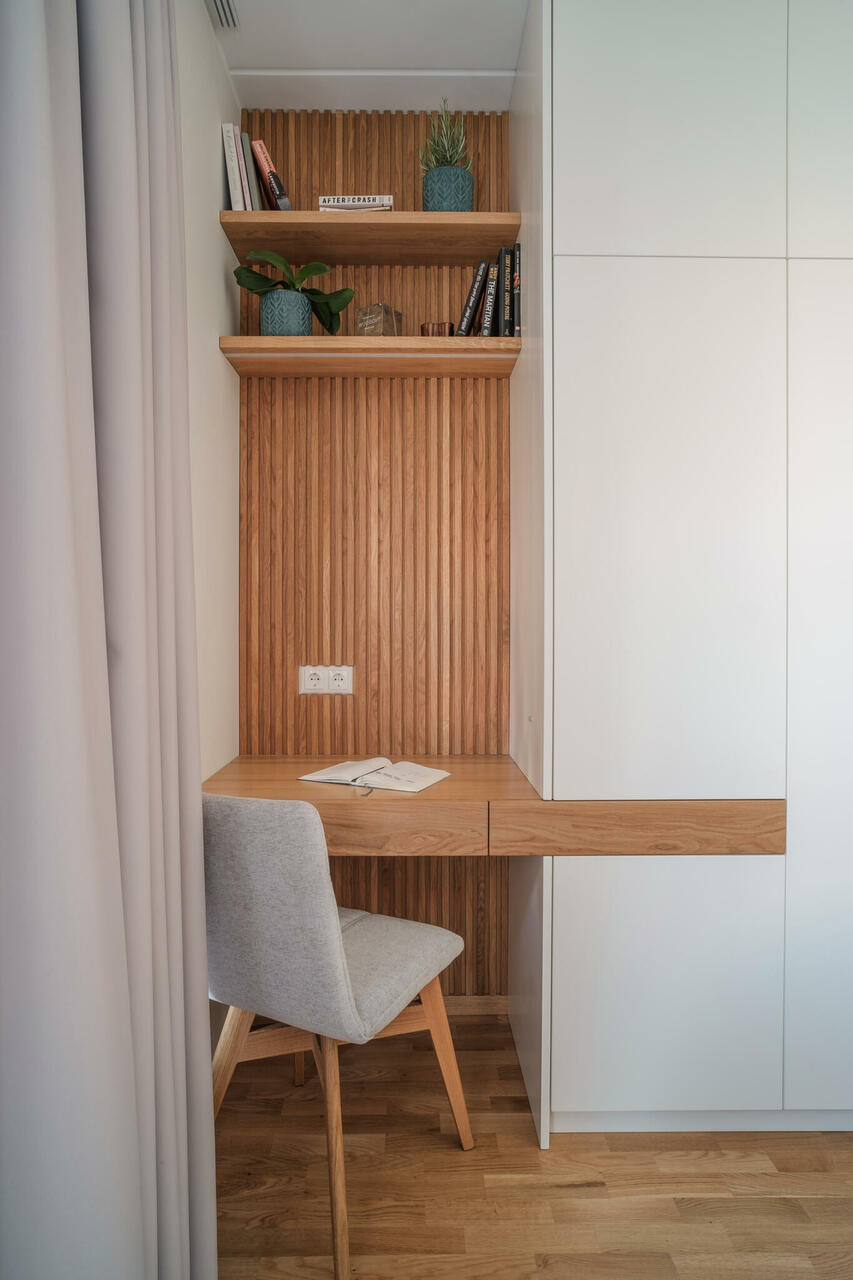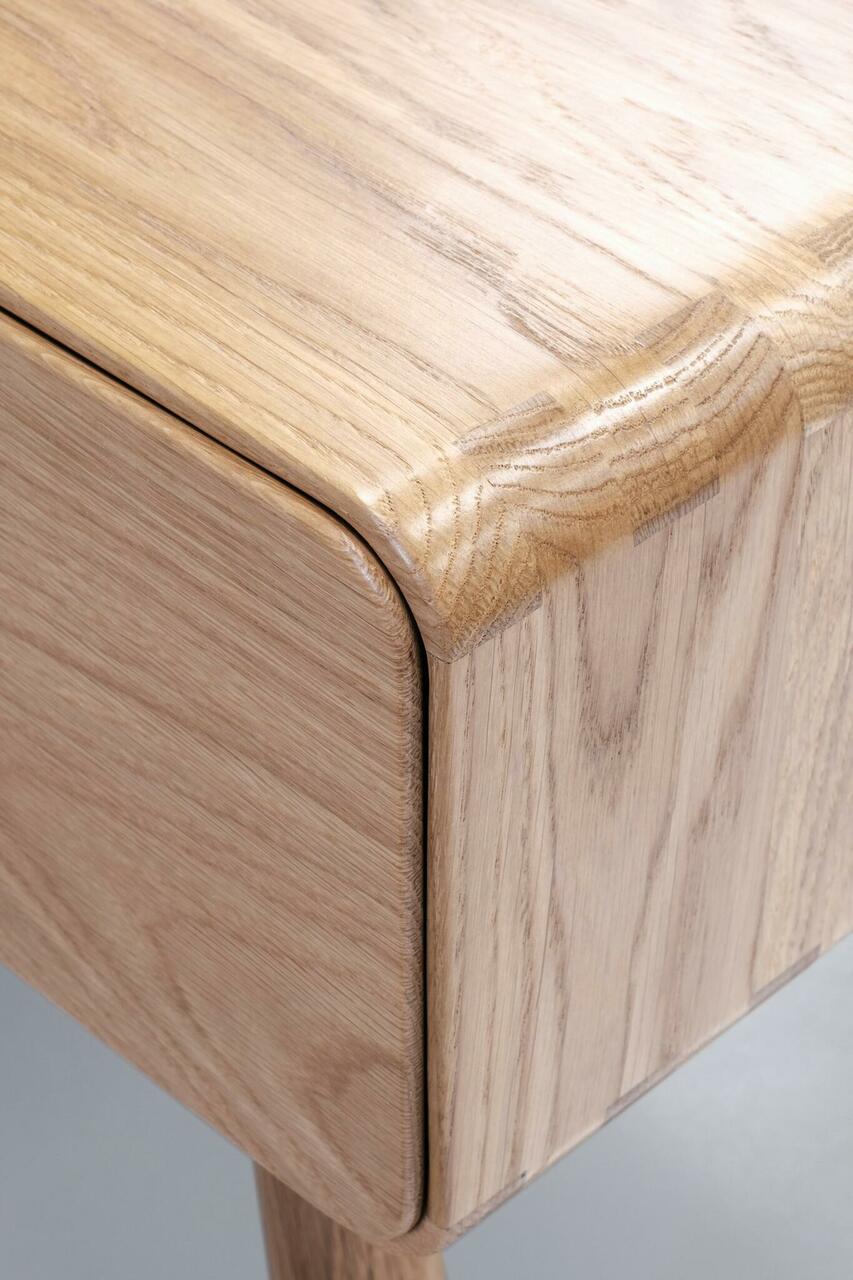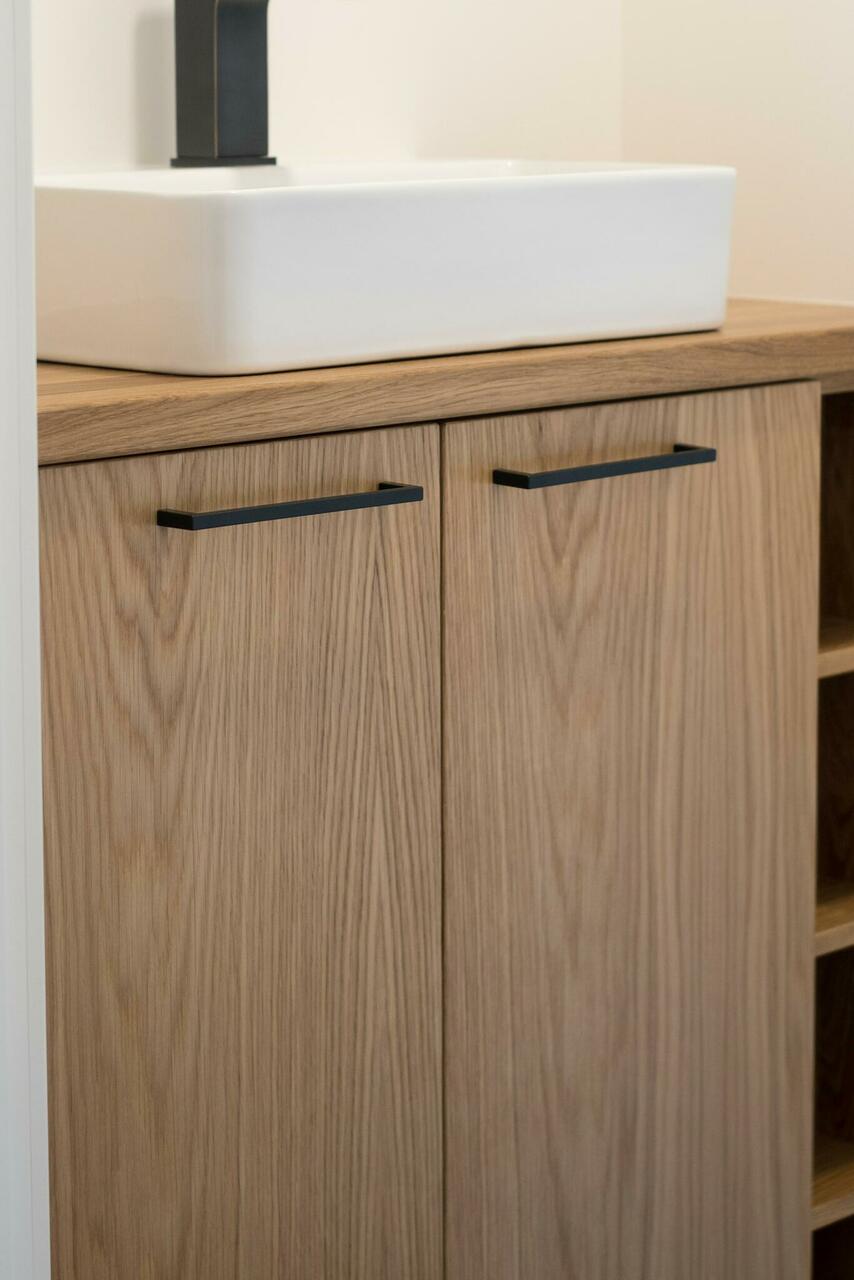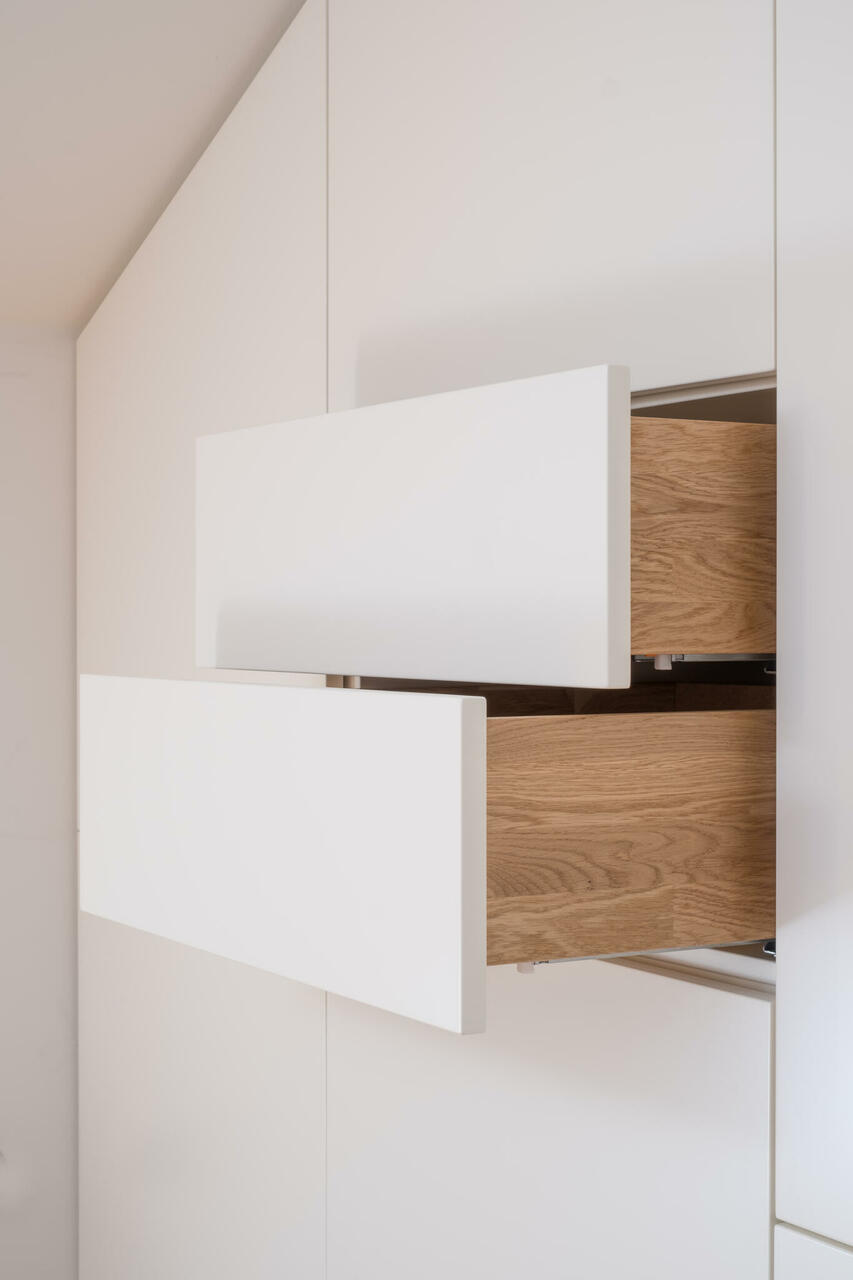Custom furniture
How to order
Contact us!
Send your request to info@woodnokk.com. Describe your idea and include a sketch as well. It doesn't have to be pretty or technically perfect, however it should give us an idea of the overall dimensions of the piece along with the locations and proportions of the different sections (drawers, doors, shelving etc). Also describe the materials you would like us to use (you can read more here). If you've found inspiration on the internet, include those photos as well and don't forget to send us your address. We offer on-site consultations when necessary. Please note that our service area for installation and consultations is Harjumaa, Estonia.
Price quote
We will ask additional questions if needed, and provide you with our price quote. In this document, you will find the materials and accessories we would use, along with the price and estimated time of delivery. Please read the price quote carefully, as to avoid any misunderstandings in the future.
Order confirmation
We require 50% of the total cost to be paid upfront by invoice. This first payment confirms your order and marks the beginning of the time of delivery.
Measuring and drawings
If necessary, we will then come and take measurements for the furniture. Please make sure that the future location of the furniture is clear of any obstructions and that construction in the area is finished.
Next we will send detailed technical drawings of the project. In that stage, you can propose changes to the proportions, construction or design. If those changes meaningfully affect the price, we will inform you and send a new price quote. Please study the drawings thoroughly and send us your written approval or any revisions you would like to make.
Delivery and installation
Upon completion of your order, we will contact you to set a date for the delivery or installation. We will also send you the second invoice for the remainder of the cost, which should be paid to us on the day of delivery at the latest.
Please note that the installation might take more than one day and there might be some dust and noise during that time. After the work is done, we will clean up after ourselves and introduce you to your brand new furniture creation.
Materials
Solid wood
Unique and beautiful - solid wood furniture brings a piece of nature into your home or office.
We mainly use oak, ash, birch and pine. Solid wood panels usually aren't just cut out of a single tree trunk. Rather, they are made by gluing together multiple boards (or staves). The width of these staves can vary, so we urge you to read the price quote carefully, as we usually include such information in the document. As a rule, commercial solid wood panels have a stave width of about 45 to 70 mm. However we can make panels, where the widths are 100 to 200 mm or even greater.
Solid wood can be used in most furniture parts.
Pros:
- The wood grain pattern gives a unique character to your furniture piece
- Solid wood is durable: a well made piece can last for generations with the right maintenance
- Suits any style of interior
- Damaged spots can be sanded and refinished
- Wood is hydroscopic, which means that its dimensions can change with humidity. Therefore we usually don't recommend making flat panel doors out of solid wood
- Solid wood can be more expensive than other wood materials
Veneered panels
Real wood on an engineered panel - an alternative material, for when you desire the look and feel of wood, but solid wood can't be used due to cost or technical reasons.
Made by gluing a thin layer of wood veneer onto particleboard or MDF. Depending on the orientation at which the veneer is cut, it can have a wilder (tangential veneer) or a more subdued pattern (radial veneer). Available with a variety of species and thicknesses.
We mainly use this material to make cabinet carcasses and doors. It isn't suitable for making worktops or other surfaces that get a lot of wear, due to the thinness of the veneer.
Pros:
- Looks and feels like solid wood
- Cheaper than solid wood
- Much less likely to warp with changes in humidity, compared to solid wood
- Available as quite large panels
- Does not hold screws as well, compared to solid wood or plywood
- Difficult to repair, due to the thinness of the veneer
Birch plywood
Plywood is made by gluing together multiple sheets of veneer. The grain direction of the layers alternates, which gives the material a very high strength regardless of the orientation of the panel. It also gives it a unique striped edge.
Plywood is available in a variety of thicknesses (from 4 to 30 mm) and levels of quality.
We use plywood mainly for drawer boxes and carcasses. Also in places where greater strength is required, such as in furniture that attaches to the wall. However, quality plywood is perfectly suited for making any part of the furniture piece and the striped edge can be covered with edge banding.
Pros:
- A strong material that holds screws very well. Therefore it makes for very durable cabinets
- Birch plywood is light in color, so it can be easily finished in a variety of tones
- Birch plywood is more stable than solid wood
- The striped edge is not to everyone's taste
Painted MDF
Our furniture is painted at a partner company's facilities by a professional painter. The work is done with a spray gun, so the finish is perfectly smooth with no brush or roller marks. A paint finish is characterized by color and gloss.
The color can be picked from
RAL, NCS, Caparol or Tikkurila
catalogues. By default we offer matte and satin gloss levels. For an extra fee we can also provide semi-gloss, full gloss and high-gloss polished surfaces.
Painted MDF is mainly used to make cabinet doors and other visible parts. A painted finish is not recommended for wearing surfaces like tabletops and worktops, since it is vulnerable to scratching.
Pros:
- A wide variety of colors is available
- A perfectly smooth surface
-
Much less likely to warp with changes in humidity, compared to solid wood
- MDF is quite heavy
- Painted finish on it's own is not suitable on a work surface. For that, it should also be lacquered for extra protection.
- Does not hold screws as well, compared to solid wood or plywood






